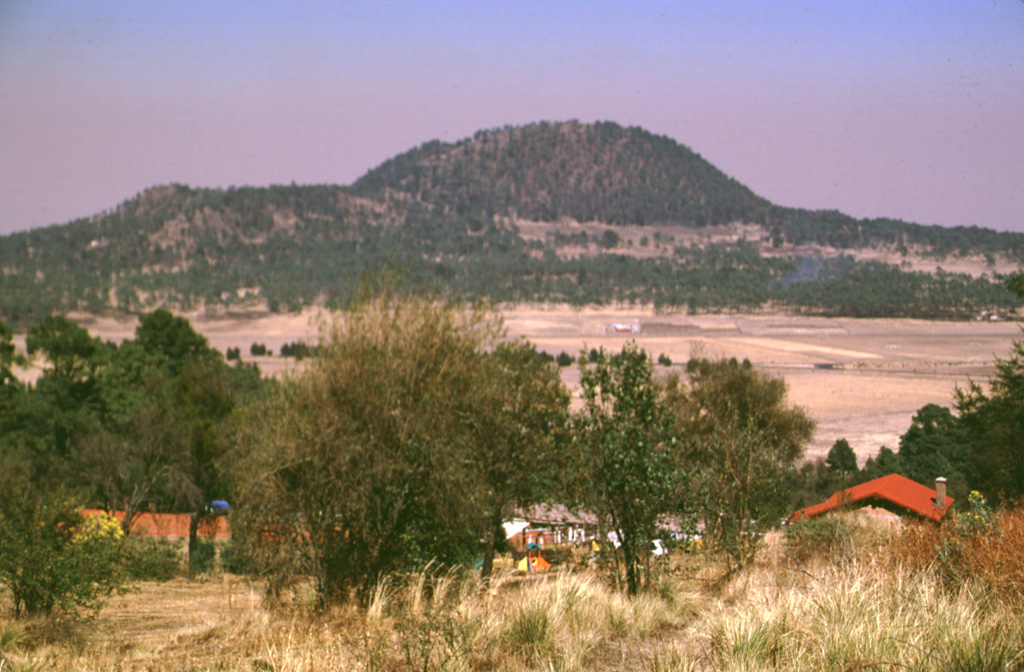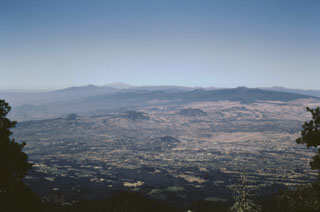Image GVP-07707

Xitle scoria cone, seen here from the SE, is one of the youngest features of the Chichinautzin volcanic field. The west-flank Xicontle cone, with a 150-m-wide crater, forms the flat ridge to the left. The eruption began about 1,600 years ago producing ashfall that underlies early lava flows. Five flank vents, at Xicontle and on other sides of the Xitle cone, produced voluminous lava flows that surrounded the scoria cone and traveled up to 13 km N, covering 80 km2.
Photo by Lee Siebert, 1998 (Smithsonian Institution).
![]() This image is made available under the Public Domain Dedication CC0 license, but proper attribution is appreciated.
This image is made available under the Public Domain Dedication CC0 license, but proper attribution is appreciated.
Keywords: scoria cone

Chichinautzin
